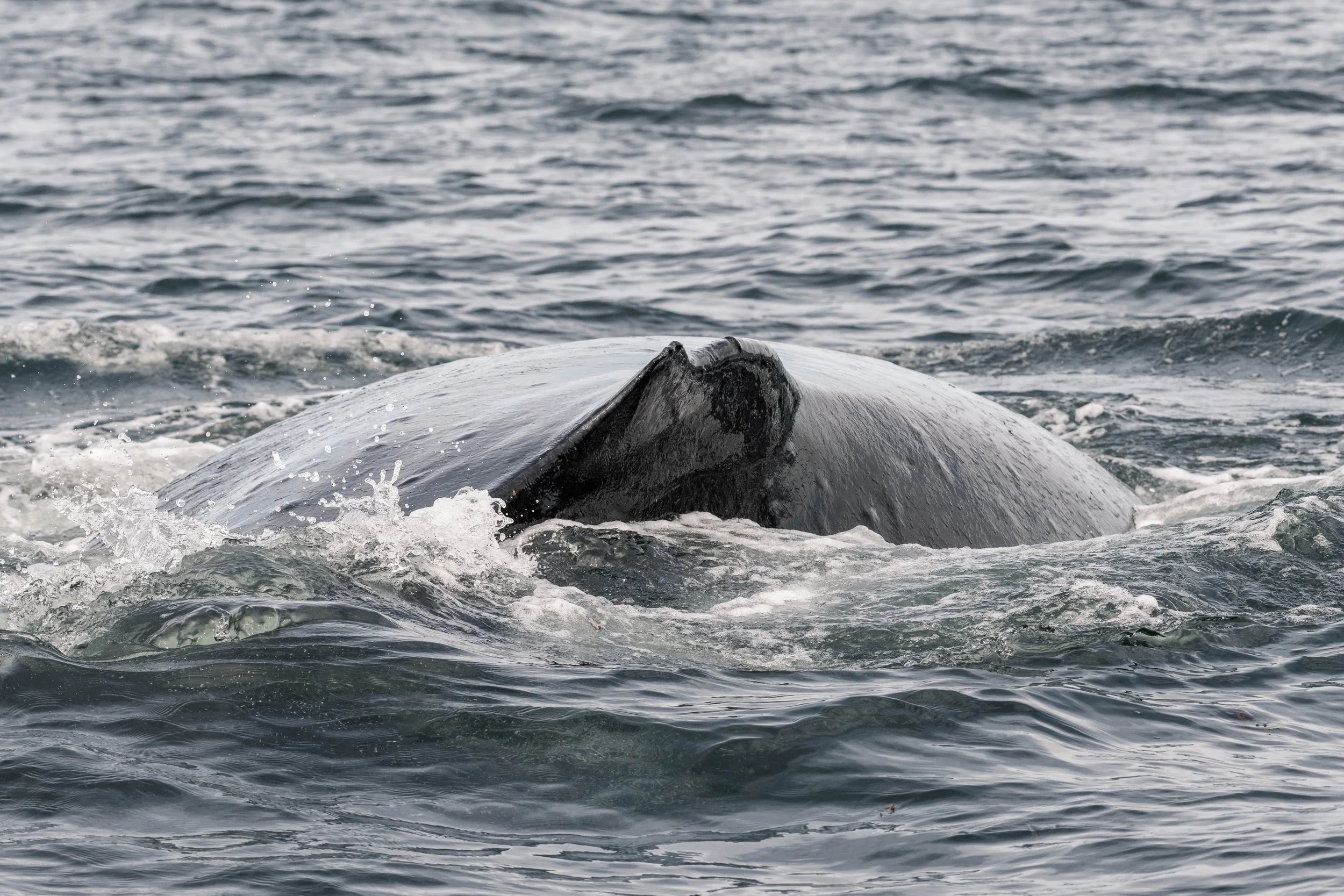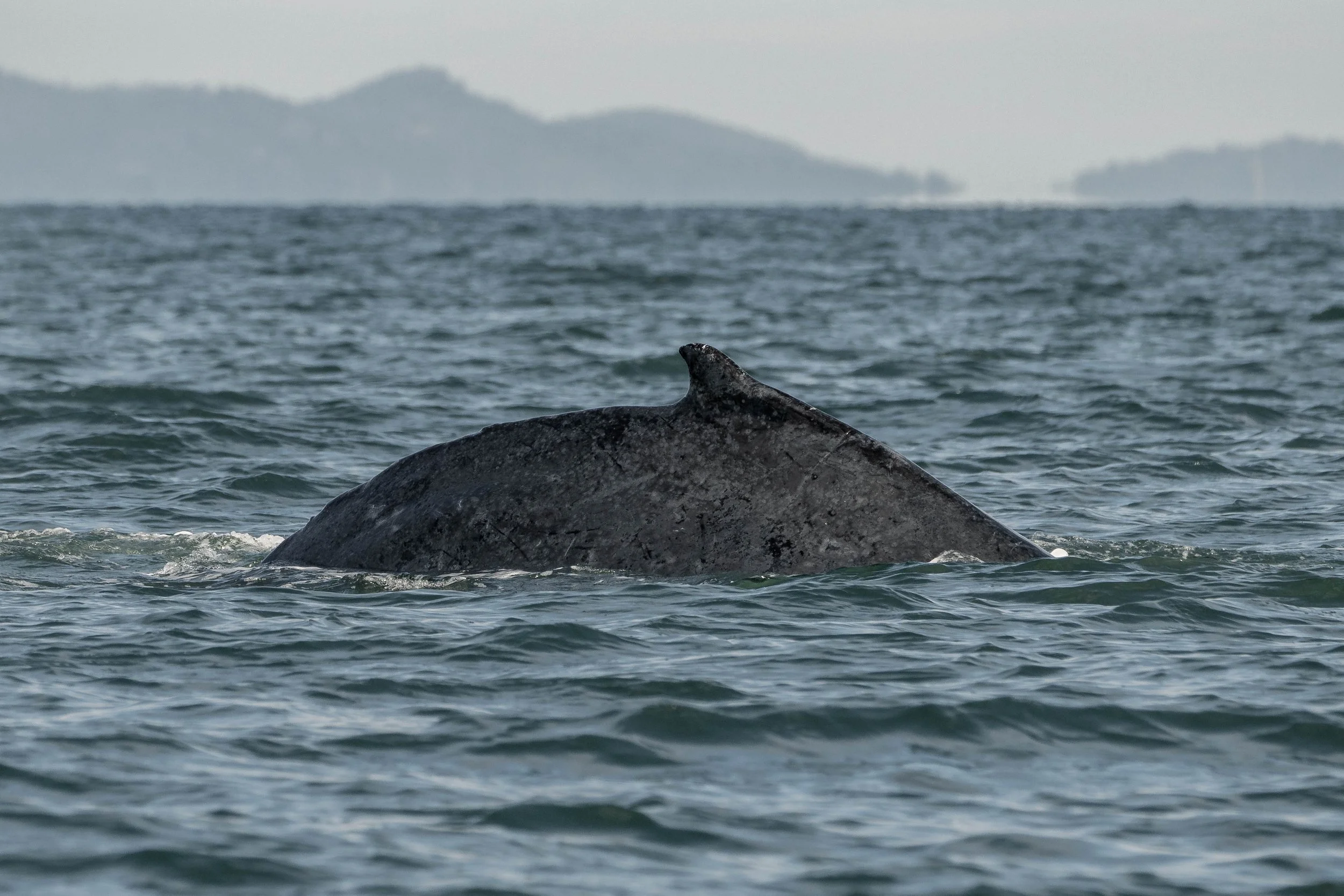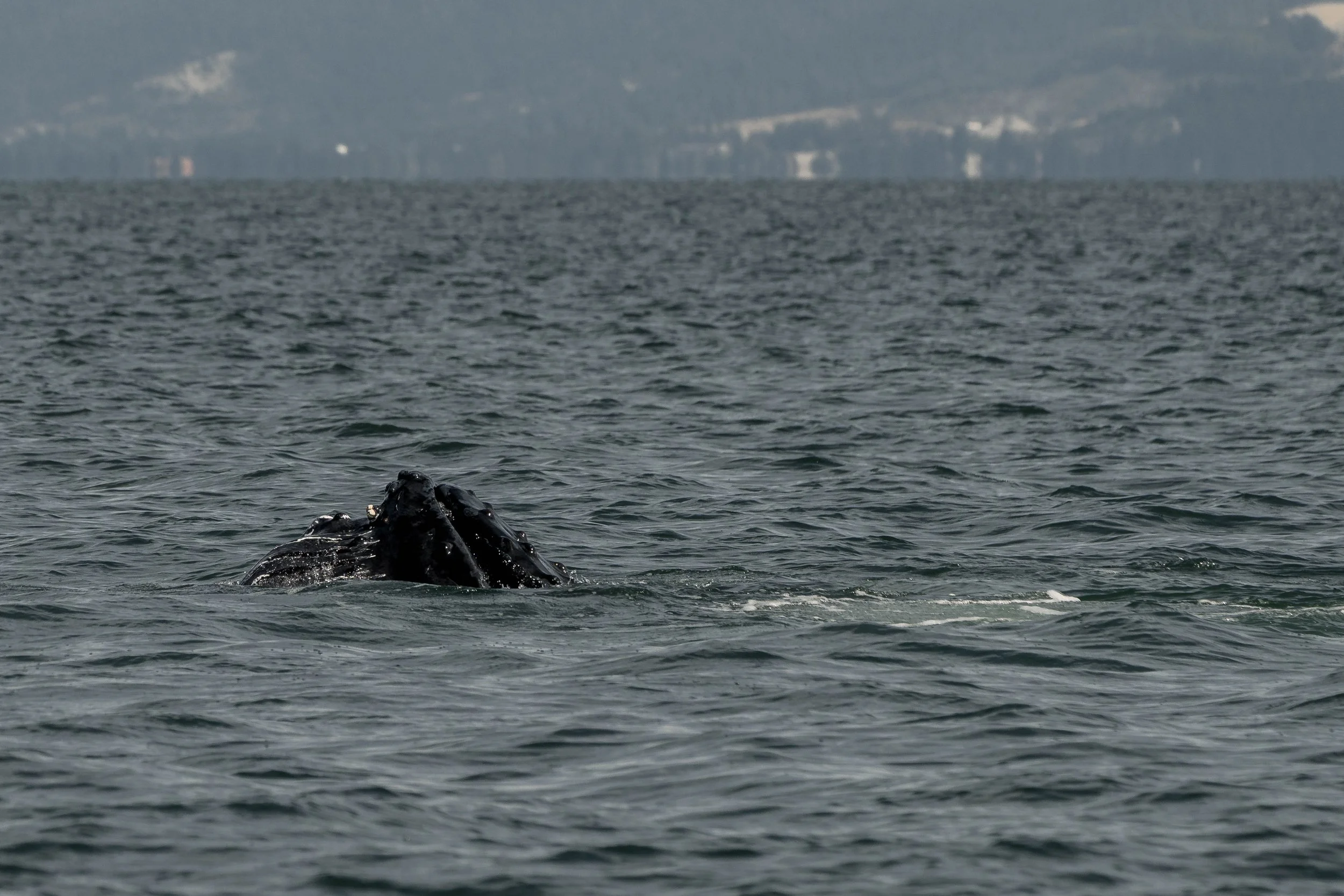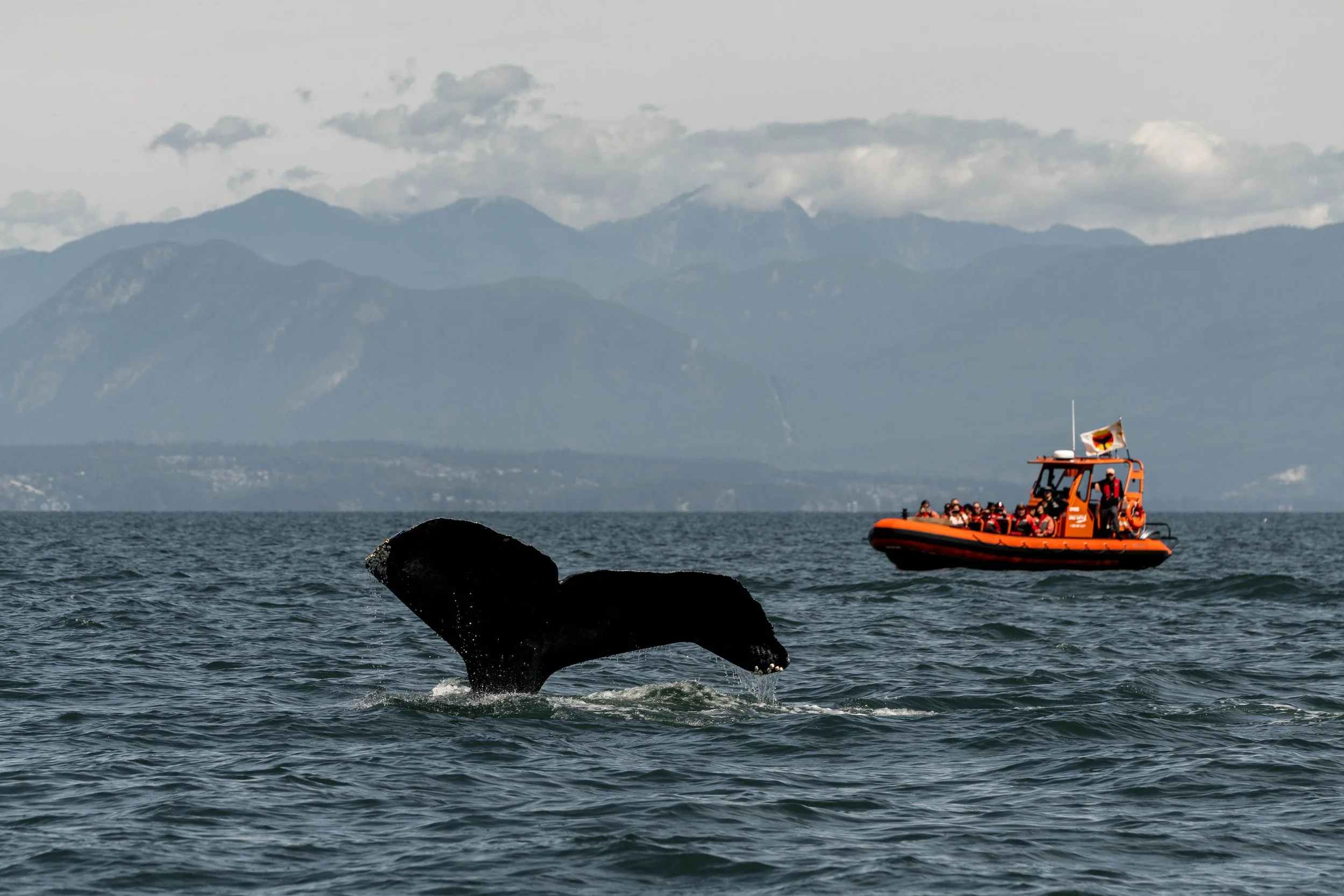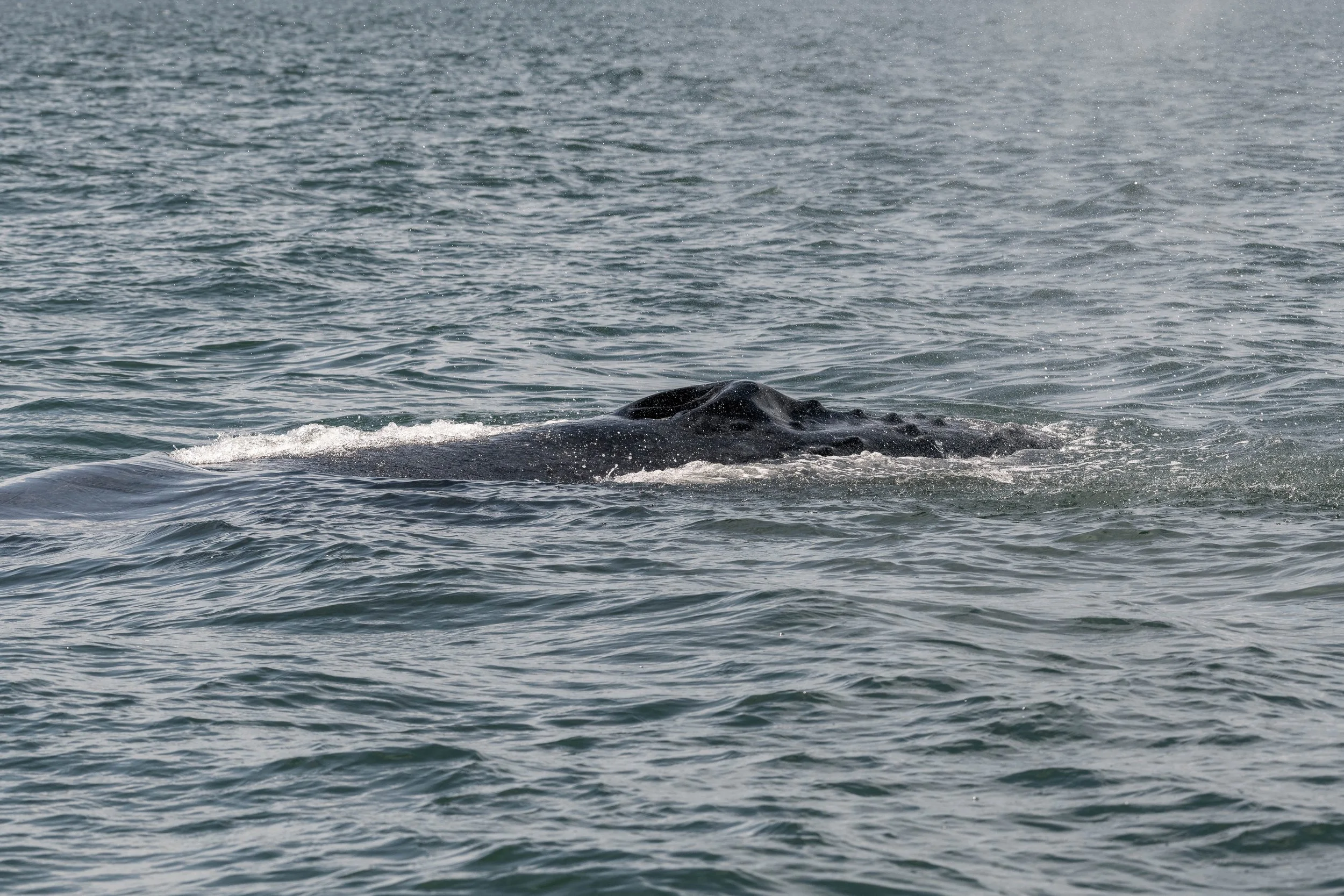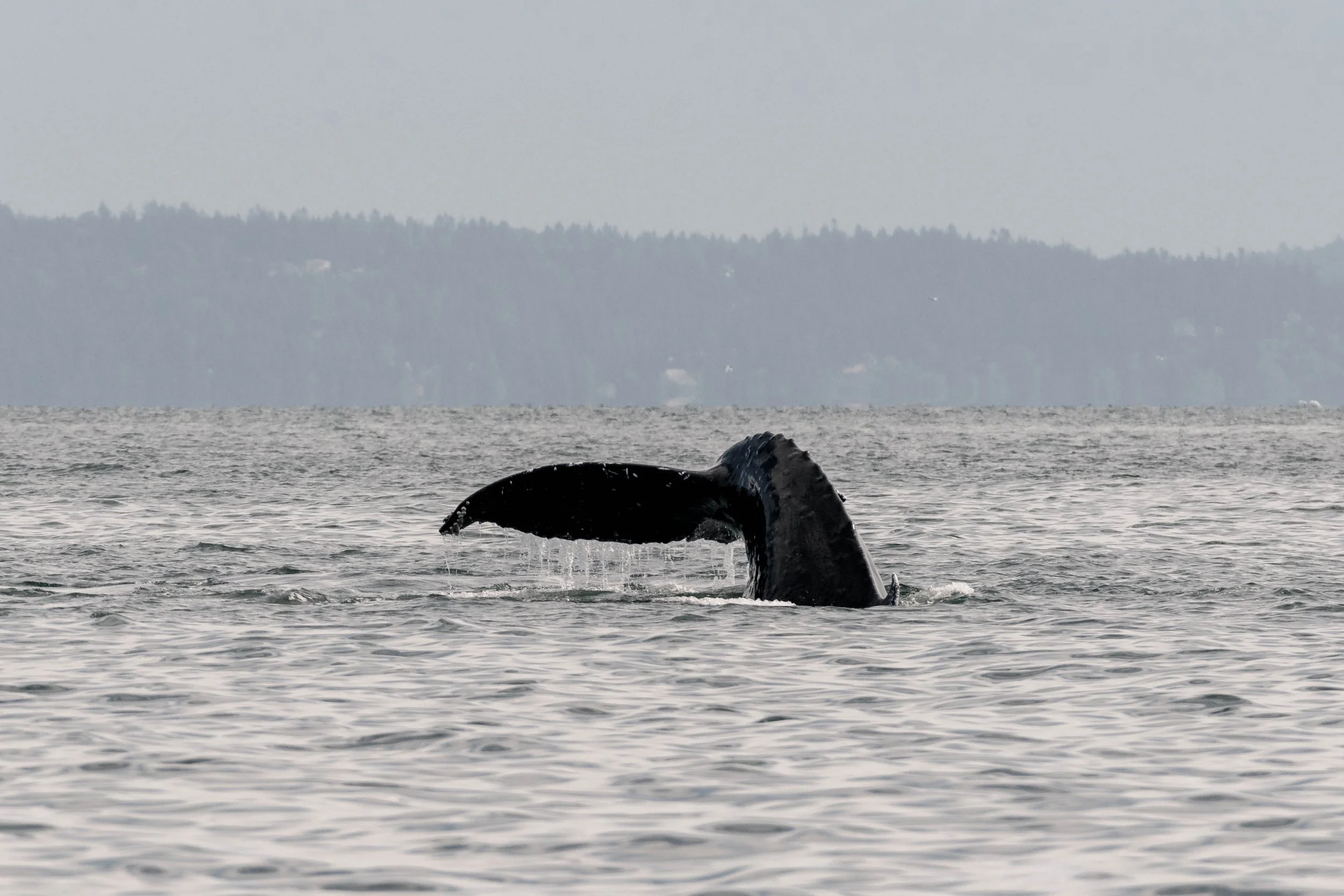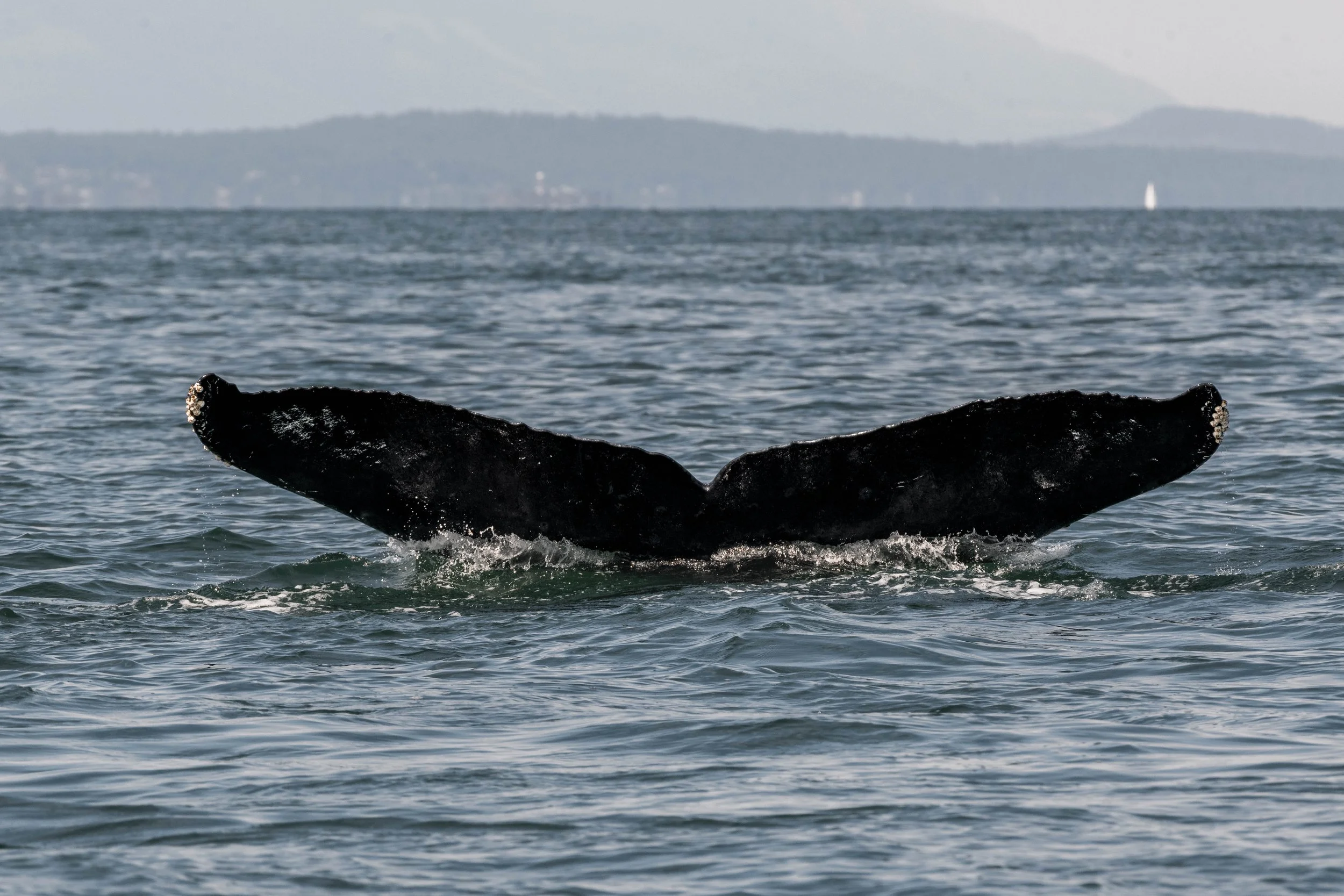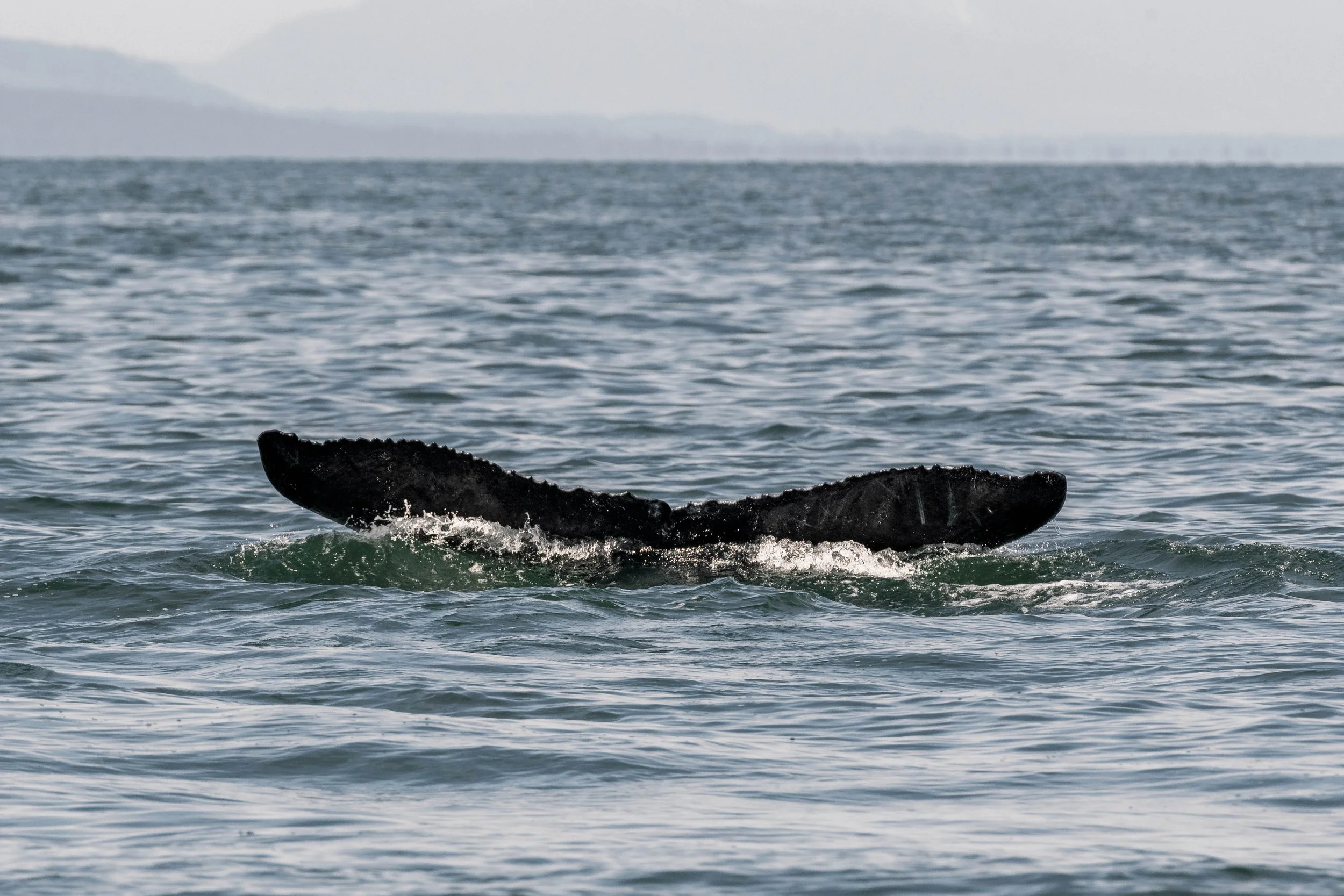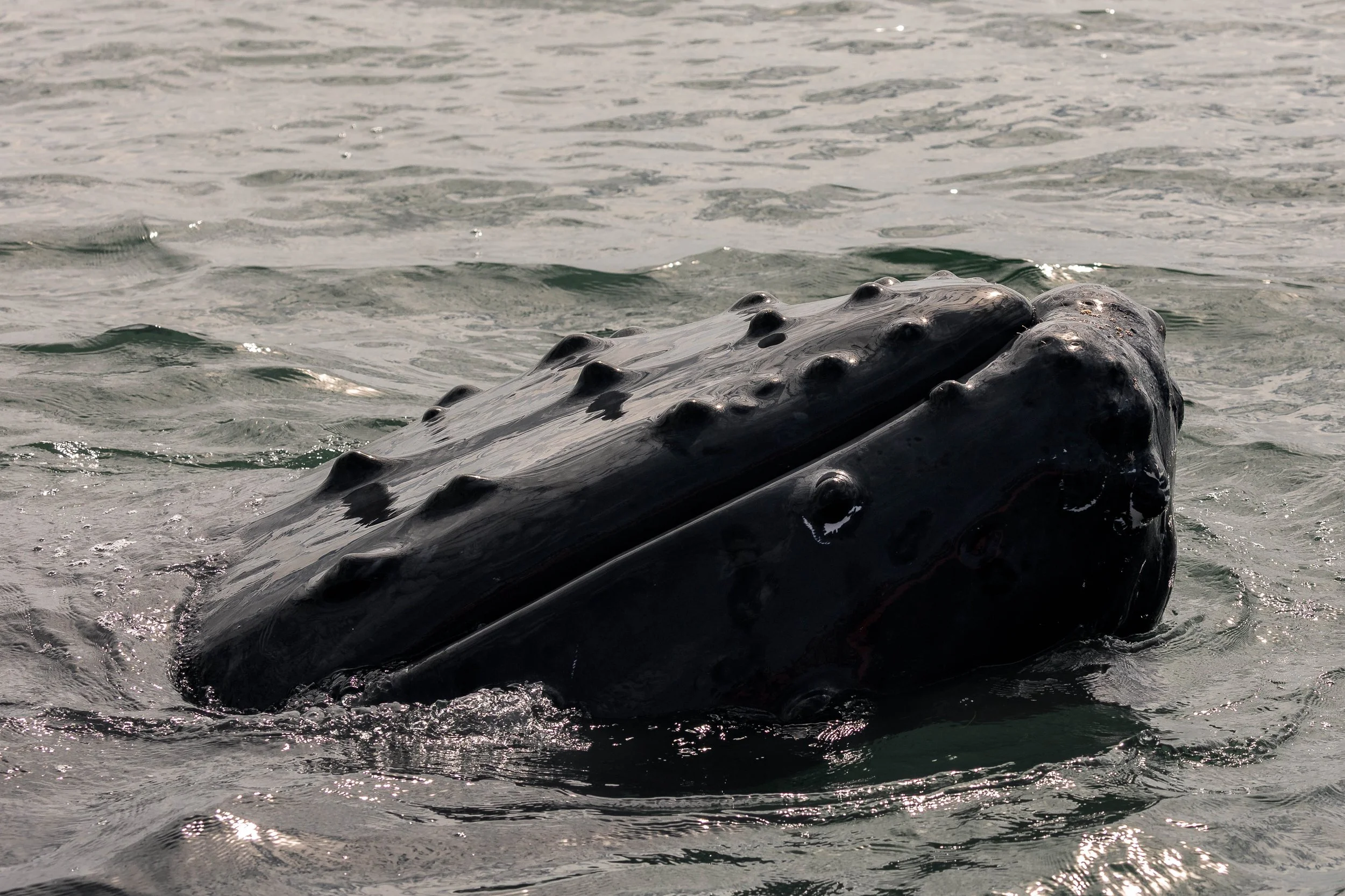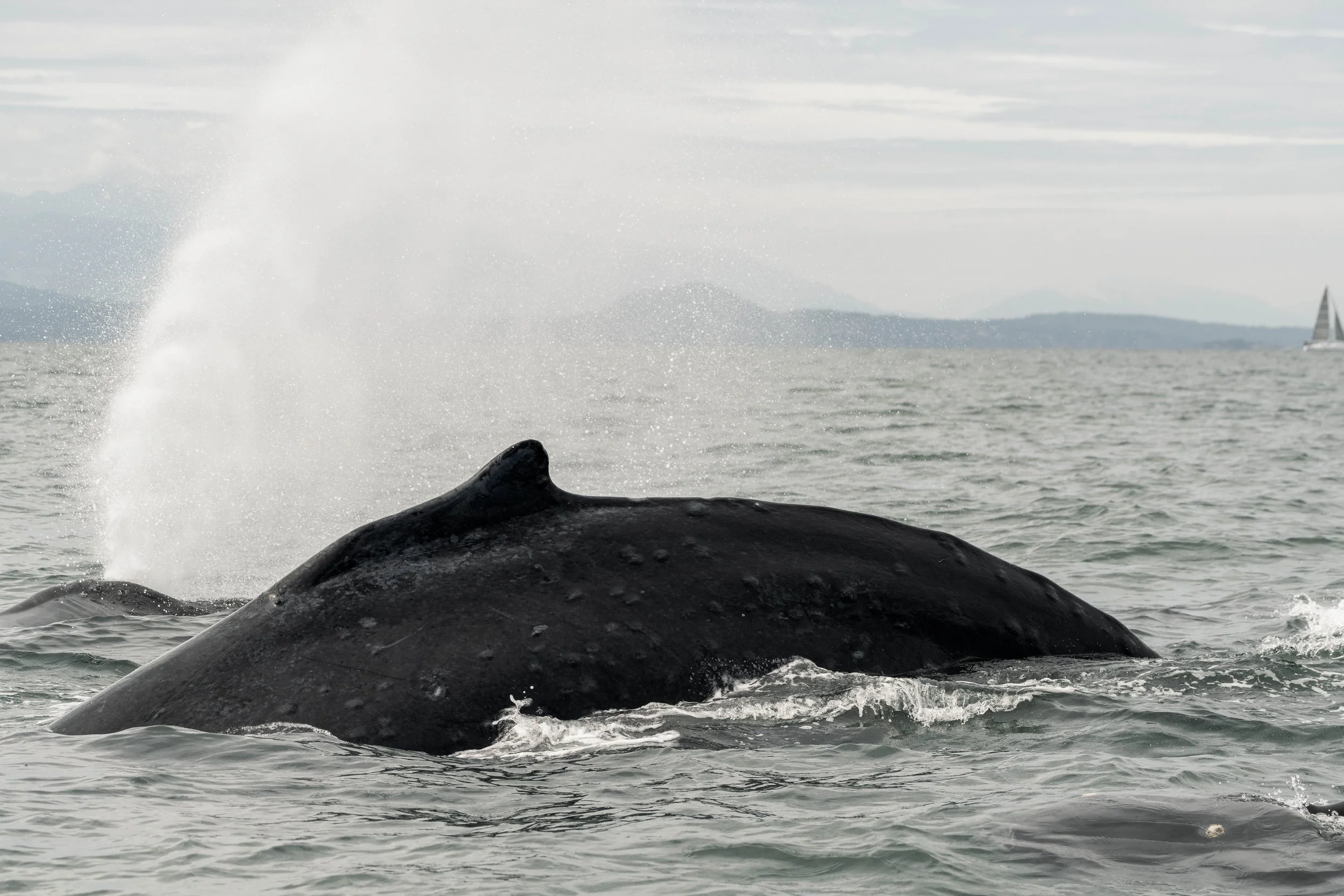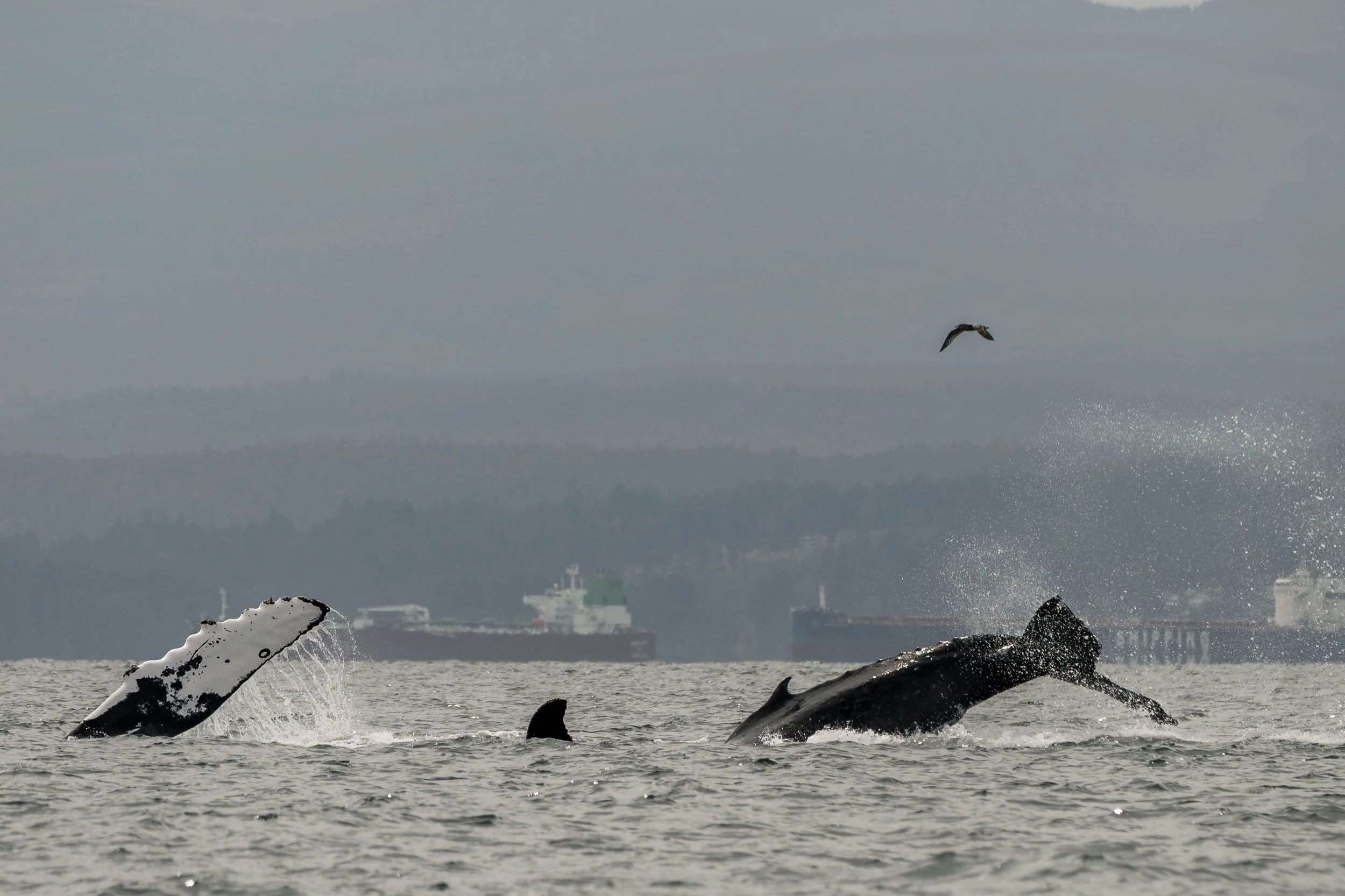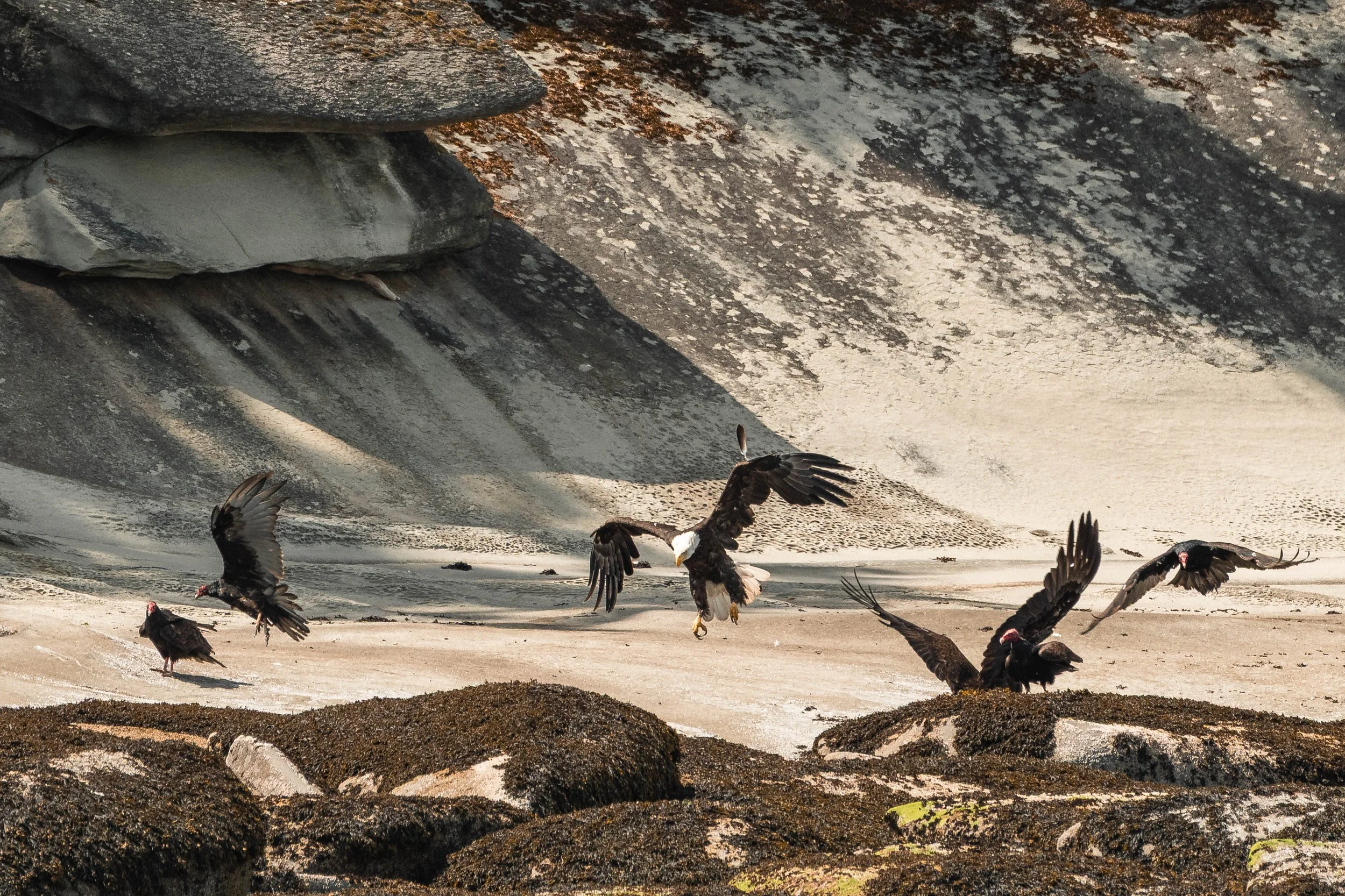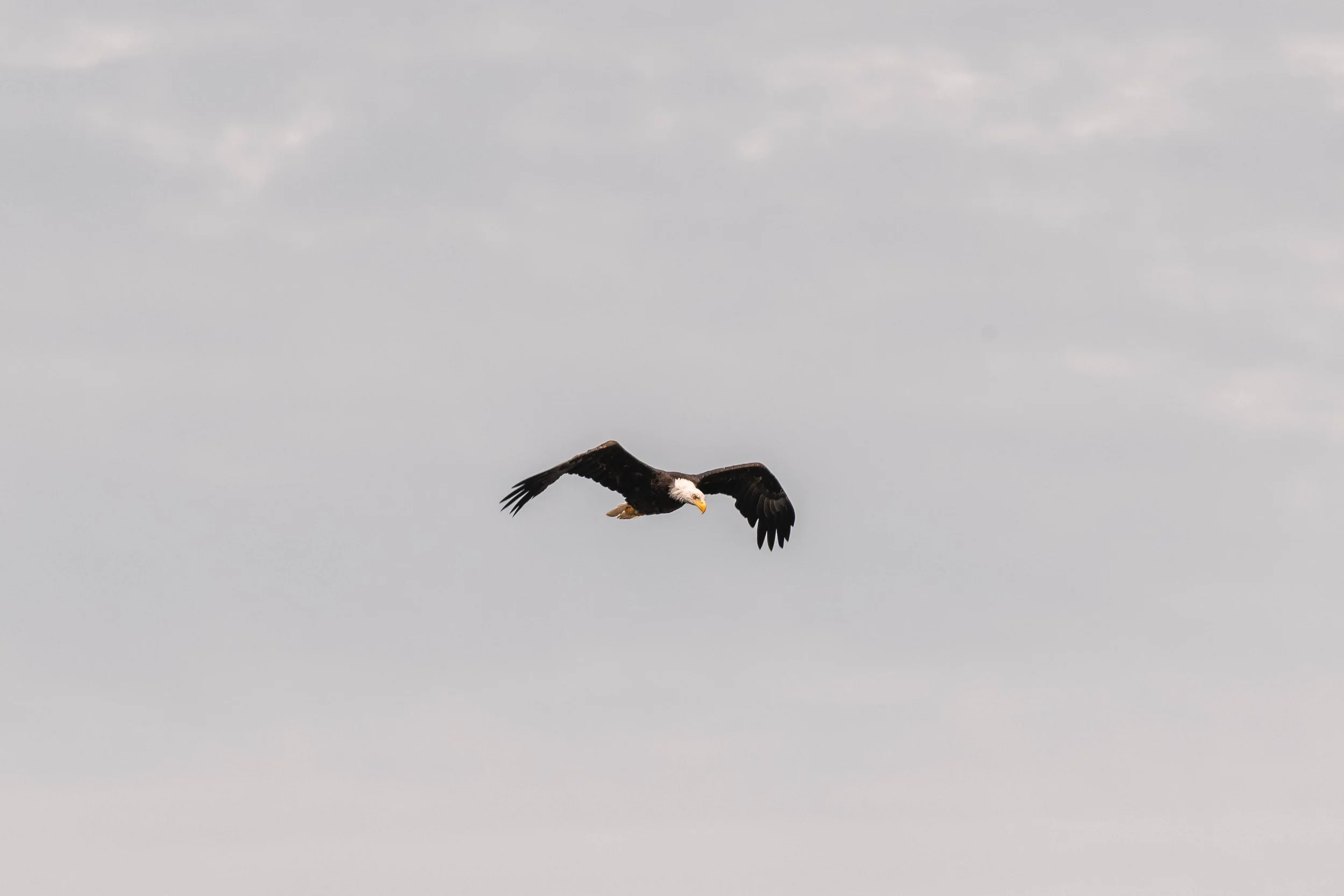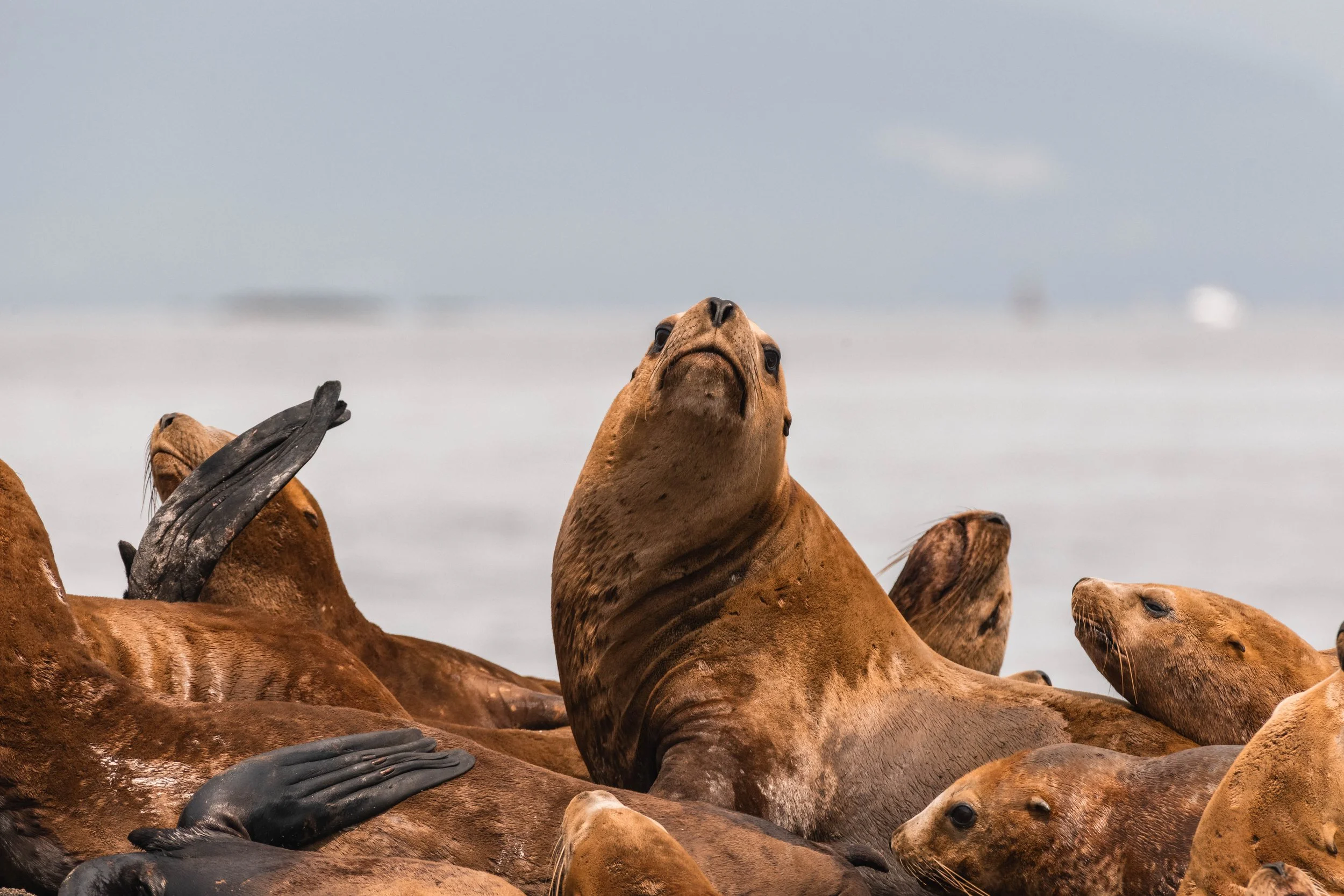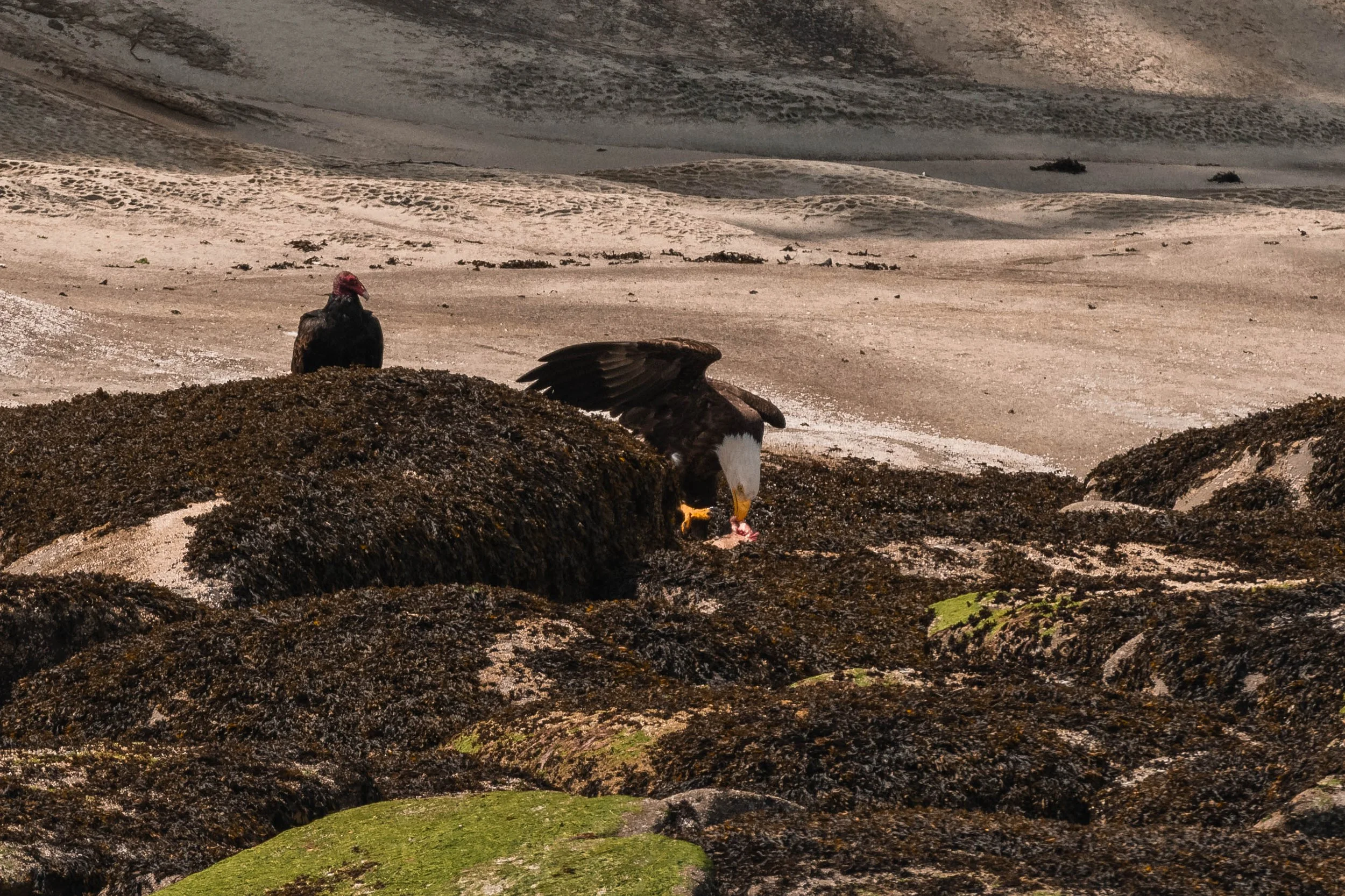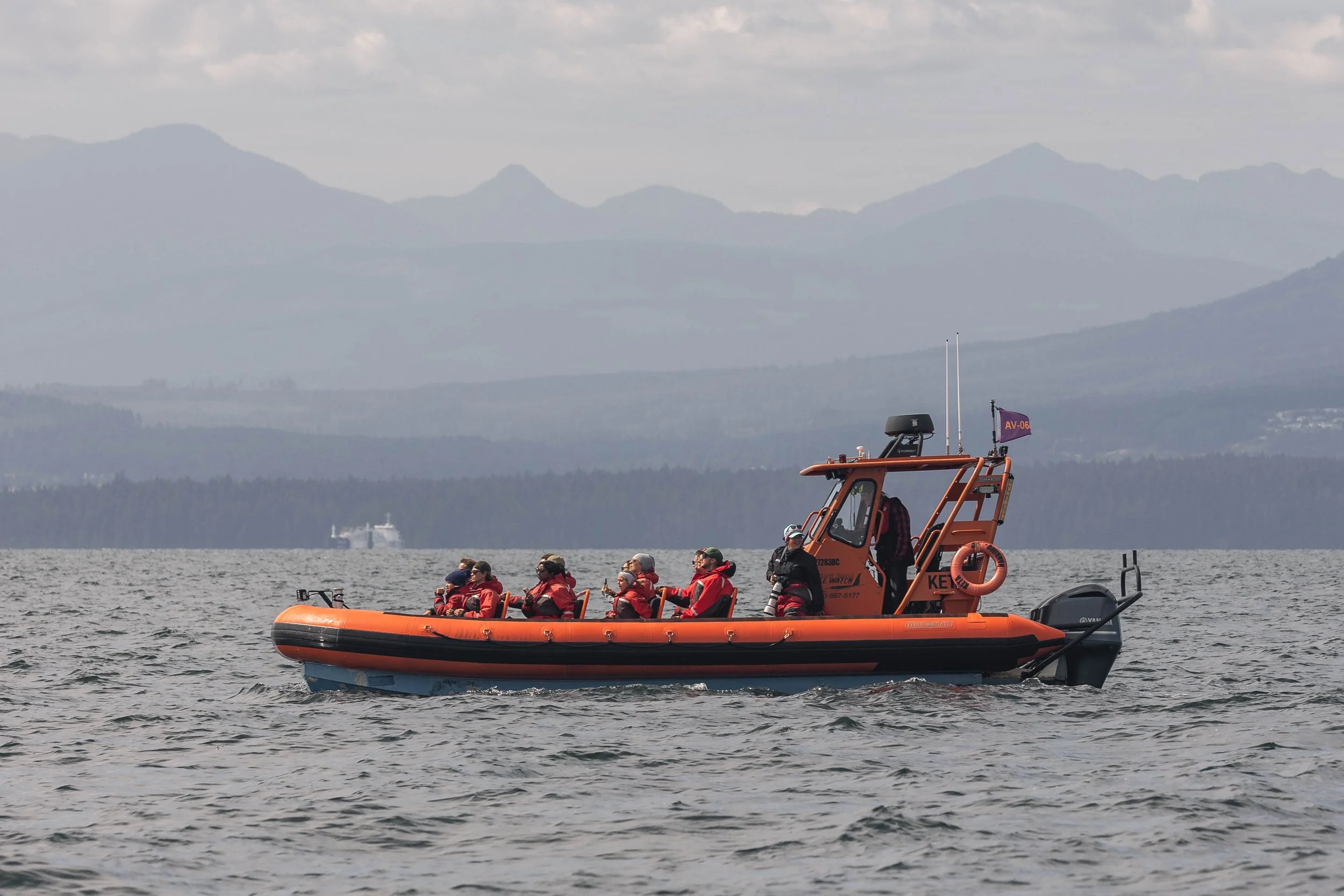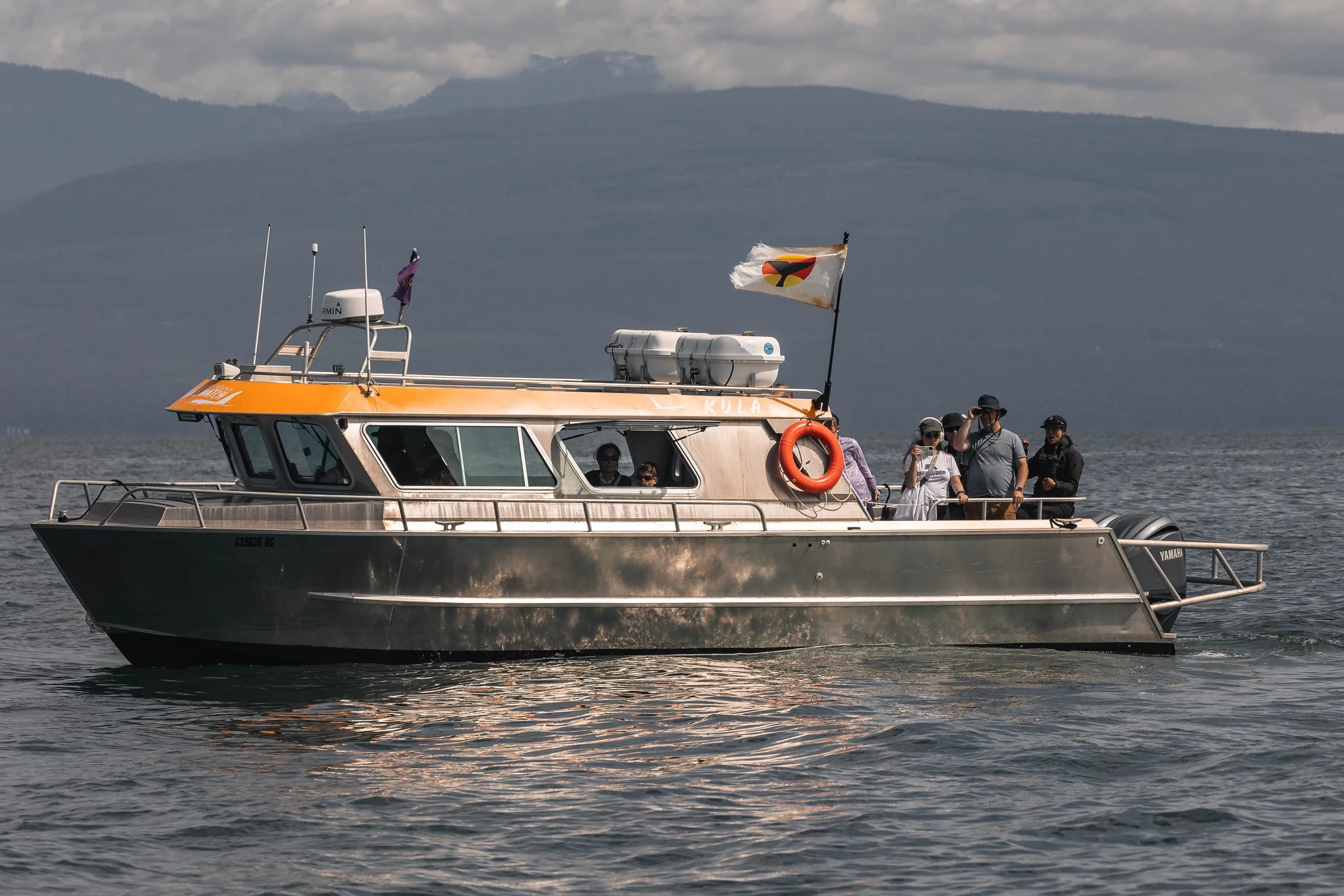August 8, 2025, 10:30 AM - Circle Bubblenetting with Sergeant
Suppose you are big “fins” of humpback whales. In that case, you likely already know that the waters off the coast of BC are known as feeding grounds for these gentle giants, with their main purpose of being here to build up as much of a fat reserve on their bodies as possible before making a huge migration down south, heading either to Hawaii or Mexico which is where they will breed and have their calves. While in those southern waters, their energy comes from burning through the layer of fat that they build over the summer months here.
What you might not know is that a lot of the behaviours that we see from the humpback whales are learned from others, not necessarily just instinct kicking in. The transfer of information between individuals doesn’t just apply to feeding behaviours either; it’s also very noticeable in their songs. When in the southern breeding grounds, the male humpbacks will spend a lot of their time singing, with their songs consisting of different and unique verses and choruses. Every once in a while, a whale will make a slight change, adding some notes or verses, and the other whales take note. If they like it, you can track the change throughout the oceans as more of the whales hear this change and decide to add it to their song as well. As the change ripples out through contact with other whales, you know that this is a transfer of knowledge. The same type of thing happens with the feeding behaviour. The whales will develop these new techniques, and when they spend time associating with another whale, they will sometimes pass this information along to them. We see it most commonly with surface-based feeding techniques, which might be obvious since many observations of whales are made at the surface from boats. One of the most amazing examples of sharing of knowledge and cooperation in feeding with the humpback whales is through Group Bubble Net Feeding. Further north in their range, you can have large groups of whales that coordinate hunting behaviour, blowing bubbles from their blowhole under the surface of the water. When moving, these bubbles form a wall which their prey can’t (or won’t) pass through. Coordinated by a single individual verbally, the whales will work together to release this wall of bubbles in a large spiral or “P” shape, trapping and concentrating their prey. Once given the go-ahead, the whales then lunge up through this concentrated mass of food, mouth open, and gather a large amount of food.
Interestingly, over time, some whales have been spotted doing this on a smaller scale, individually or in pairs, also using their bubbles to form these nets, concentrating their food. But they don’t come up with this on their own. It’s knowledge passed along between individuals! When whales are associating or travelling close together, they are likely in communication, working together to feed beneath the surface. Sometimes one of these whales would be known for one type of unique feeding behaviour, like circle bubblenetting, and the other wouldn’t be. But then something amazing will happen. After the whales are no longer associating with the non-bubblenetter, they will suddenly become a whale that can bubble-net!
We had an exciting example of this today, when the tour started with a lone humpback spotted lunge feeding in our rich waters: Fallen Knight (BCX0915). She was doing some typical (although still very impressive) feeding close to the surface. Not too far from her, we spotted another feeding humpback, but this time with a twist: they were laying down a circle of bubbles to concentrate their food before lunging up through it! This whale was Sergeant (BCX1846). Sergeant is known to frequent not only the waters of the Salish Sea, but also up in Alaska, close to Juneau. Interestingly, they have already been to Alaska this year, starting with a sighting in Hawaii in mid-February, then being seen off of Alaska in mid-June, and ending up close to Nanaimo now! It’s a lot of ground covered for a whale, but the ties to the northern sections of the Pacific Northwest are likely where he learned this feeding technique from. While we watched on in awe as the bubbles rose to the surface and Sergeant lunged up through them, we noticed something else: Fallen Knight was making her way over here. Soon enough, both whales were feeding together in the area, with Fallen Knight even giving an attempted bubble net herself. It was learning in action! Only time will tell if this is a technique that we see from Fallen Knight in the future.
We also got to witness another set of whales that would be learning from each other, a mom and calf travelling with another individual: Ghost (BCX1333), her 2025, and Zorro (BCX0380). The relationship between a mom and her calf is the ultimate example of learning in action, since mom will be passing on as much information as possible to their young one during the first year of their life that they spend together. Feeding techniques, surface behaviours, and other humpback social norms all seem to be things that will be passed on from mom to calf. We got to see an impressive variety of behaviours from these whales, from feeding dives, socializing, to surface activity like tail slapping and cartwheeling! It was a fantastic sight to witness this young whale learning from their mom. We felt so privileged to witness all of the amazing interactions throughout the tour today, and returned to the dock with the smiles still glued to our faces.
Please enjoy all the fantastic photos taken throughout the trip by the onboard Marine Naturalists Val Watson, Aly Kohlman, and Jordan Robinson!
Fallen Knight
Fallen Knight going for a dive. Photo by Aly Kohlman.
Fallen Knight lunging near the boat. Photo by Aly Kohlman.
A great look at Fallen Knight’s tail. Photo by Aly Kohlman.
Fallen Knight going for a dive. Photo by Jordan Robinson.
Sergeant (later joined by Fallen Knight)
Sergeant’s dorsal fin. Photo by Val Watson.
Sergeant’s nostrils as they surface. Photo by Val Watson.
Sergeant Lunge Feeding. Photo by Val Watson.
You can see the circle of bubbles next to Sergeant. Photo by Val Watson.
Can you spot Sergeant’s Baleen in this photo? Photo by Val Watson.
Sergeant lunging through the water. Photo by Val Watson.
Fallen Knight diving with Cascadia watching in behind. Photo by Val Watson.
Sergeant on the left surfacing with Fallen Knight on the right. Photo by Val Watson.
Sergeant’s beautiful tail. Photo by Aly Kohlman.
Sergeant lunge feeding. Photo by Aly Kohlman.
Sergeant lunging through the water. Photo by Aly Kohlman.
A great look at the baleen plates in Segeant’s mouth. Photo by Aly Kohlman.
A beautiful look at Sergeant’s tail. Photo by Jordan Robinson.
Sergeant lunge feeding. Photo by Jordan Robinson.
Ghost, Calf, and Zorro
Zorro going for a dive. Photo by Aly Kohlman.
You can see the missing portion of Zorro’s tail. Photo by Aly Kohlman.
Ghost lifting her tail to dive with her calf arching for a dive beside her. Photo by Aly Kohlman.
Ghost’s nostrils. Photo by Aly Kohlman.
A great look up Ghost’s nostrils. Photo by Aly Kohlman.
Ghost’s calf surfacing with their mom in behind. Photo by Aly Kohlman.
A fluke waterfall from Ghost. Photo by Aly Kohlman.
The underside of Ghost’s tail. Photo by Aly Kohlman.
The underside of the calf’s tail. Photo by Aly Kohlman.
Ghost and her calf surfacing side by side. Photo by Jordan Robinson.
Ghost on the left with Zorro on the right. Photo by Jordan Robinson.
Ghost and Zorro diving together. Photo by Jordan Robinson.
Those bumps are called turbercules! They have hair follucles in them that help the humpbacks sense their prey. Photo by Jordan Robinson.
Zorro swimming away from the boat. Photo by Jordan Robinson.
Ghost lifting her tail, creating a lovely fluke waterfall. Photo by Jordan Robinson.
Can you spot all three whales in this photo? We have Ghost (middle), her calf (bottom right corner) and Zorro (in behind) surfacing together. Photo by Val Watson.
Ghost diving with her calf in front of her and Zorro behind her. Photo by Val Watson.
Ghost tail lobing with a splash from Zorro beside her. Photo by Val Watson.
Ghost swimming on her side. Photo by Val Watson.
Ghost swimming sideways with Zorro Cartwheeling behind her. Photo by Val Watson.
Stinky Rock
Harbour Seals on Stinky Rock. Photo by Val Watson.
A feeding frenzy along Valdes Island. Photo by Val Watson.
Harbour Seal watching us from the water. Photo by Val Watson.
Surf Birds spending time on Stinky Rock. Photo by Val Watson.
A bald eagle flying overhead. Photo by Aly Kohlman.
A very itchy Steller Sea Lion. Photo by Aly Kohlman.
An interesting pose from one of the Steller Sea Lions. Photo by Aly Kohlman.
Very fuzzy Steller Sea Lions. Photo by Aly Kohlman.
A very happy looking Harbour Seal. Photo by Aly Kohlman.
Bald eagle having a snack on the Valdes Shoreline.Photo by Aly Kohlman.
Looks to be a mammal of some sort. Photo by Aly Kohlman.
Happy whale watchers on Keta. Photo by Jordan Robinson.
Happy whale watchers on Kula. Photo by Jordan Robinson.
Kula and Cascadia happily watching the whales. Photo by Val Watson.
A young gull flying by. Photo by Jordan Robinson.
A bald eagle flying away with a fishy lunch. Photo by Jordan Robinson.
Watching us from the land with his meal. Photo by Jordan Robinson.
A very cute Harbour Seal and their pup. Photo by Jordan Robinson.
Cormorant’s on the Gabriola Bluffs. Photo by Jordan Robinson.


